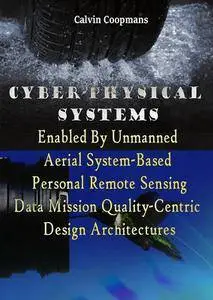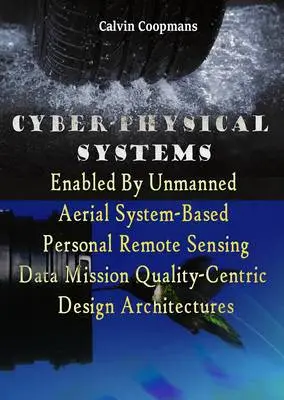"Cyber-Physical Systems Enabled By Unmanned Aerial System-Based Personal Remote Sensing: Data Mission Quality-Centric Design Architectures" by Calvin Coopmans
ExLi4EvA/USUL | 2017 | ISBN: 8048197057 9788048197050 | 199 pages | PDF | 20 MB
ExLi4EvA/USUL | 2017 | ISBN: 8048197057 9788048197050 | 199 pages | PDF | 20 MB
In this book, a set of architectural requirements for integration is presented: the Architecture for Ethical Aerial Information Sensing or AERIS. AERIS provides a cohesive set of requirements for any architecture or set of architectures designed for safe, ethical, accurate aerial data collection. This work presents background about personal remote sensing (PRS) and the AggieAir unmanned aerials system (UAS) platforms, and the coming technologies of cyber-physical systems (CPSs), with motivating examples of how the two technologies can work together; shows how architecture drives the values of a system, which drives the functionality, risks, and rewards of the system dynamics and interactions with the environment around it, as well as introducing AERIS, the architecture for ethical remote information sensing.
Enabled by AERIS, shows detailed system implantation details about a high-dataworthiness payload control structure, emphasizing the idea of data as a mission, and equating data mission assurance partly with payload resilience; shows how low-cost inertial sensors are a good option for increasing mission quality in PRS UASs, and how fractional calculus can help glean even more information from them. Then, advanced battery management techniques are shown to increase the dataworthiness of a vertical takeoff and landing craft by compensating for power loss depending on the lithium-polymer battery power system, adding a state-of-charge-dependent gain, and providing satisfactory control in situations when feedback about actuator thrust or velocity is not available.
Contents
Acknowledgments
List of Tables
List of Figures
Acronyms
1. Introduction
2. AggieAir Unmanned Aerial Vehicle-Based Sensing Platforms
3. Cyber Physical Systems Enabled by sUAS Remote Sensing
4. Architectures for Ethical Remote Information Sensing
5. A Payload Verification and Management Framework for Small UAV-based Personal Remote Sensing Systems
6. Small Unmanned Aerial System Navigation and a Fractional-Order Complementary Filter
7. Battery State-of-Charge Aware Altitude Controller for Small, Low-Cost Multirotor Unmanned Aerial Vehicles
8. Conclusion
References
true PDF with TOC BookMarkLinks



